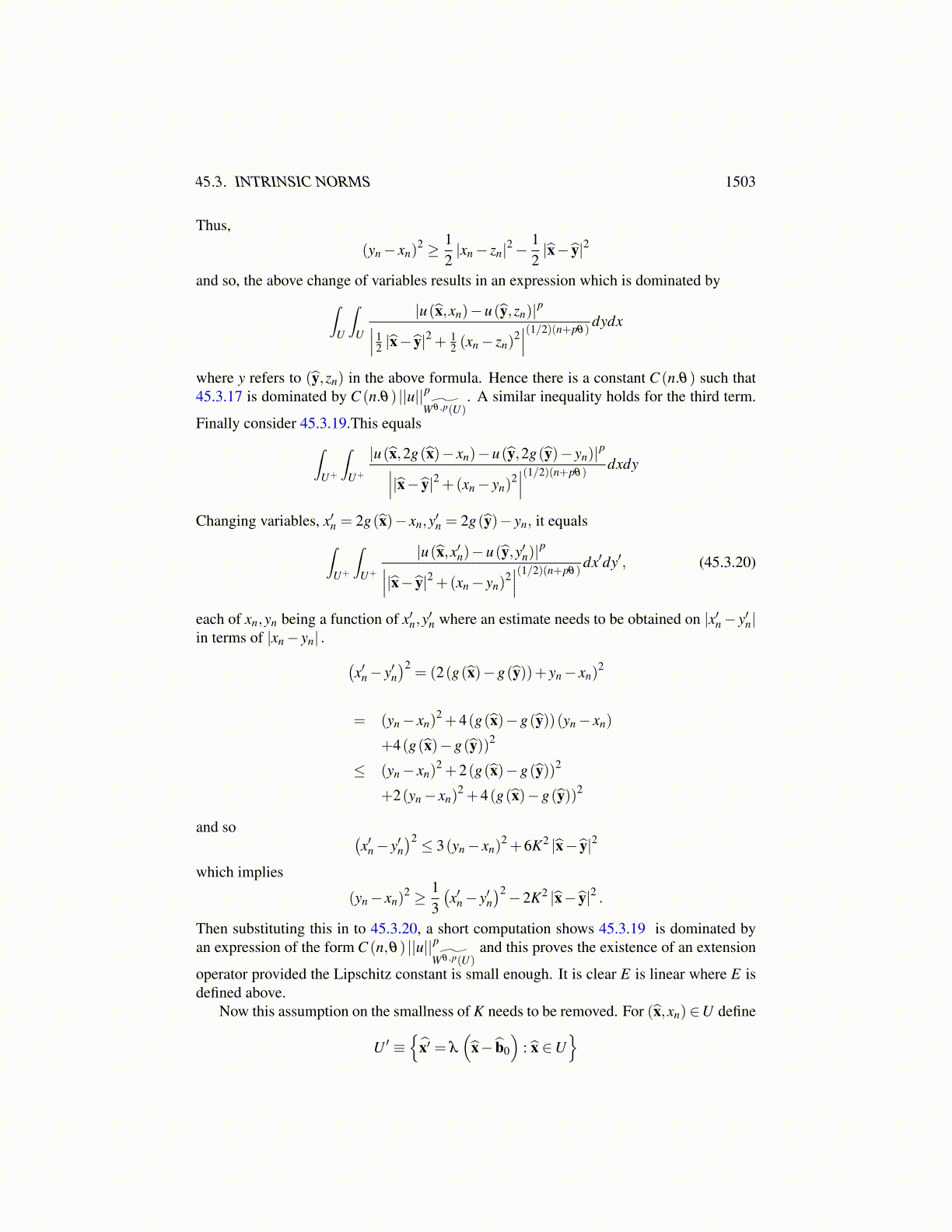
45.3. INTRINSIC NORMS 1503
= |(||u||Lp ,ρ (u))+(||v||Lp ,ρ (v))|lp
≤ |(||u||Lp ,ρ (u))|lp+ |(||v||Lp ,ρ (v))|lp
=(||u||pLp +ρ (u)p)1/p
+(||v||pLp +ρ (v)p)1/p
= ||u||+ ||v||
The other properties of a norm are obvious. This proves the theorem.As pointed out in the above theorem, this is a norm in 45.3.16. One could define a
set of functions for which this norm is finite. In the case where Ω = Rn the conclusion ofTheorem 45.3.10 is that this space of functions is the same as W θ ,p (Rn) and the norms areequivalent. Does this happen for other open subsets of Rn?
Definition 45.3.11 Denote by ˜W θ ,p (U) the functions in Lp (U) for which the norm of The-orem 45.3.10 is finite. Here θ ∈ (0,1) .
Proposition 45.3.12 Let U be a bounded open set which has Lipschitz boundary and θ ∈(0,1). Then for each p≥ 1, there exists E ∈L
(˜W θ ,p (U),W θ ,p (Rn)
)such that Eu(x) =
u(x) a.e. x ∈U.
Proof: In proving this, I will use the equivalent norm of Theorem 45.3.10 as the normof W θ ,p (Rn) Consider the following picture.
a
b
U ∩B× (a,b)
U+
b0
spt(u)
B
The wavy line signifies a part of the boundary of U and spt(u) is contained in the circleas shown. It is drawn as a circle but this is not important. Denote by U+ the region abovethe part of the boundary which is shown. Also let the boundary be given by xn = g(x̂) forx̂ ∈ B ≡ B(ŷ0,r) ⊆ Rn−1. Of course u is only defined on U so actually the support of u iscontained in the intersection of the circle with U . Let the Lipschitz constant for g be verysmall and denote it by K. In fact, assume 8K2 < 1. I will first show how to extend whenthis condition holds and then I will remove it with a simple trick. Define
Eu(x̂,xn)≡
u(x̂,xn) if xn ≤ g(x̂)u(x̂,2g(x̂)− xn) if xn > g(x̂)0 if x̂ /∈ B